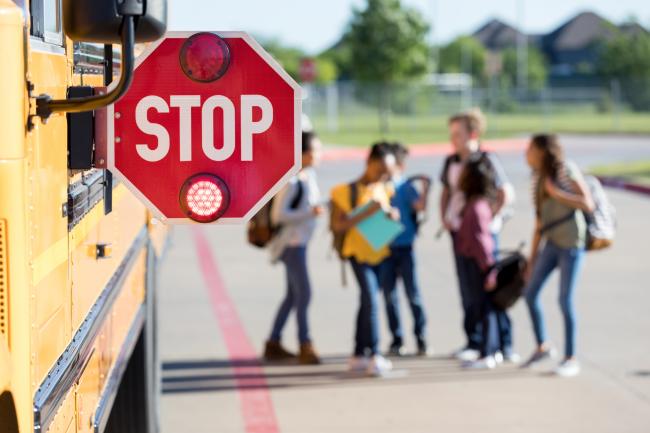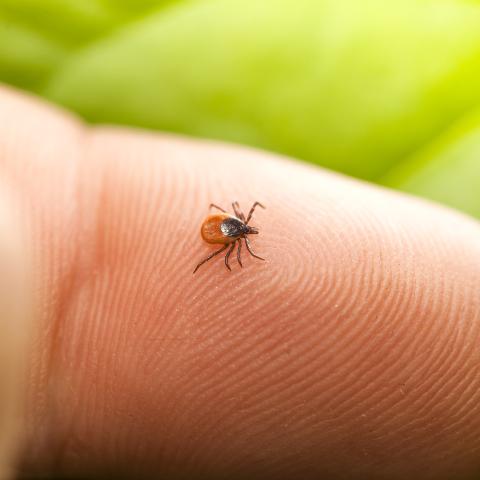Posted In Health Tips on August 28, 2023

According to the National Highway Traffic Safety Administration (NHTSA), there are hundreds of students killed and thousands injured in their commute to and from school each year.
The NHTSA found that children are most at risk when getting on and off the school bus due to either being hit by the bus or a motorist illegally passing a stopped school bus. In a study from 2012 to 2021, they found that more school-age pedestrians were killed between 6 and 7 a.m. than any other hours of the day.
A lot of these deaths and injuries can be avoided if everyone slows down, watches out for each other, and follow travel safety tips. Remember to stay alert and stay safe!
Dropping off or picking up students
- Don't double park; it blocks visibility for other children and vehicles.
- Never park in a fire lane, emergency lane, or space designated for handicapped parking.
- Don't load or unload children across the street from the school.
- When possible, carpool to reduce the number of vehicles at the school.
Driving in or near school zones
- Don't block the crosswalk when stopped at a red light or waiting to make a turn, forcing pedestrians to go around you; this could put them in the path of moving traffic.
- Always be on the lookout for pedestrians crossing the road, especially at crosswalks and intersections. Pedestrians always have the right of way on the road.
- Never pass a vehicle stopped for pedestrians
- Always stop for a school patrol officer or crossing guard holding up a stop sign.
- Obey posted reduced speed limits in school zones. These can be as low as 15 or 25 miles per hour and are in effect during peak times when students are entering or leaving school. These times are posted and can also be indicated with flashing yellow lights when the speed limits are in effect.
- Avoid passing or changing lanes in a school zone.
Driving near a school bus
- Never pass a school bus from behind if it is stopped to load or unload children.
- Never pass on the right side of the bus, where children enter or exit. This is illegal and can have tragic results.
- Yellow flashing lights on a school bus mean that the bus is preparing to stop to pick up or drop off children. Drivers should slow down and prepare to stop.
- Red flashing lights indicate the bus has stopped and children are getting on or off the bus. Vehicles must stop a safe distance away and not start again until the red lights stop flashing, and the bus begins moving.
- The area 10 feet around a school bus is the most dangerous for children; stop far enough back to allow them space to safely enter and exit the bus.
- Traffic in both directions must stop for a stopped school bus if there is no dividing median separator on the road no matter how many lanes are on the road. On undivided roads, cars traveling in both directions – those driving behind the school bus, and those driving toward the bus on the other side – must stop, and stay stopped, until the bus proceeds.
Driving near bicyclists
- When turning left and a bicyclist is approaching in the opposite direction, wait for the rider to pass.
- If you're turning right and a bicyclist is approaching from behind on the right, let the rider go through the intersection first, and always use your turn signals.
- Watch for bike riders turning in front of you without looking or signaling.
- Watch for bikes coming from driveways or behind parked cars.
- When stopped, check your side mirrors before opening your door near traffic lanes.
- When passing a bicyclist, proceed in the same direction slowly, and leave three feet between your car and the cyclist.
- Be extra vigilant in school zones and residential neighborhoods.
Bus rider safety
- Stay out of the street when waiting for the bus. Wait at least three feet away from the curb or edge of the road.
- Do not run to the bus. Wait for the bus to come to a complete stop, the door opens completely, and the driver says it is okay to step into the bus.
- Never walk behind the bus. Remain visible to the bus driver at all times.
- If you have to cross the street, wait at the side of the road at least 10 feet ahead of the bus; wait for the bus driver to signal it is safe to cross; and watch out for vehicles as you cross.
- Only get off the bus at your assigned spot. Be sure you know what to do if you accidentally get off at the wrong stop.
- Wait for the bus to come to a complete stop before entering or exiting the bus. Always exit from the front; use the handrails.
- Be careful clothing or backpacks don’t get caught on the handrails or in the doors.
- If you drop something near the bus, tell the bus driver before trying to pick it up to be sure the driver sees you.
Bicyclist safety
- Ride on the right side of the road, with traffic, and in a single file.
- Come to a complete stop before crossing the street; walk bikes across the street.
- Stay alert and avoid distracted riding.
- Wear properly fitting helmets and bright or reflective clothing.
Pedestrian safety
- Try to walk to school with other students. There is safety in numbers.
- Walk on the sidewalk, if one is available; when on a street with no sidewalk, walk facing the traffic.
- Before you cross the street, stop and look left, right, and left again to see if cars are coming.
- Make eye contact with drivers before crossing and cross streets at crosswalks or intersections.
- Stay alert and avoid distracted walking with mobile devices.
Driver safety
- When backing out of a driveway or parking space, be alert for children. Don’t rely on your backup camera. Look over both shoulders to make sure the coast is clear and back up slowly.
- Be careful on streets without sidewalks or streets with on-street parking. It might be hard to notice a child behind a car or those that dart out from between parked cars.
- Don't block the crosswalk when stopped at a red light or waiting to make a turn, forcing pedestrians to go around you; this could put them in the path of moving traffic.
- Stay alert and avoid distracted driving. Always expect the unpredictable, especially with children who can unexpectedly dart out into the road in front of your vehicle.





